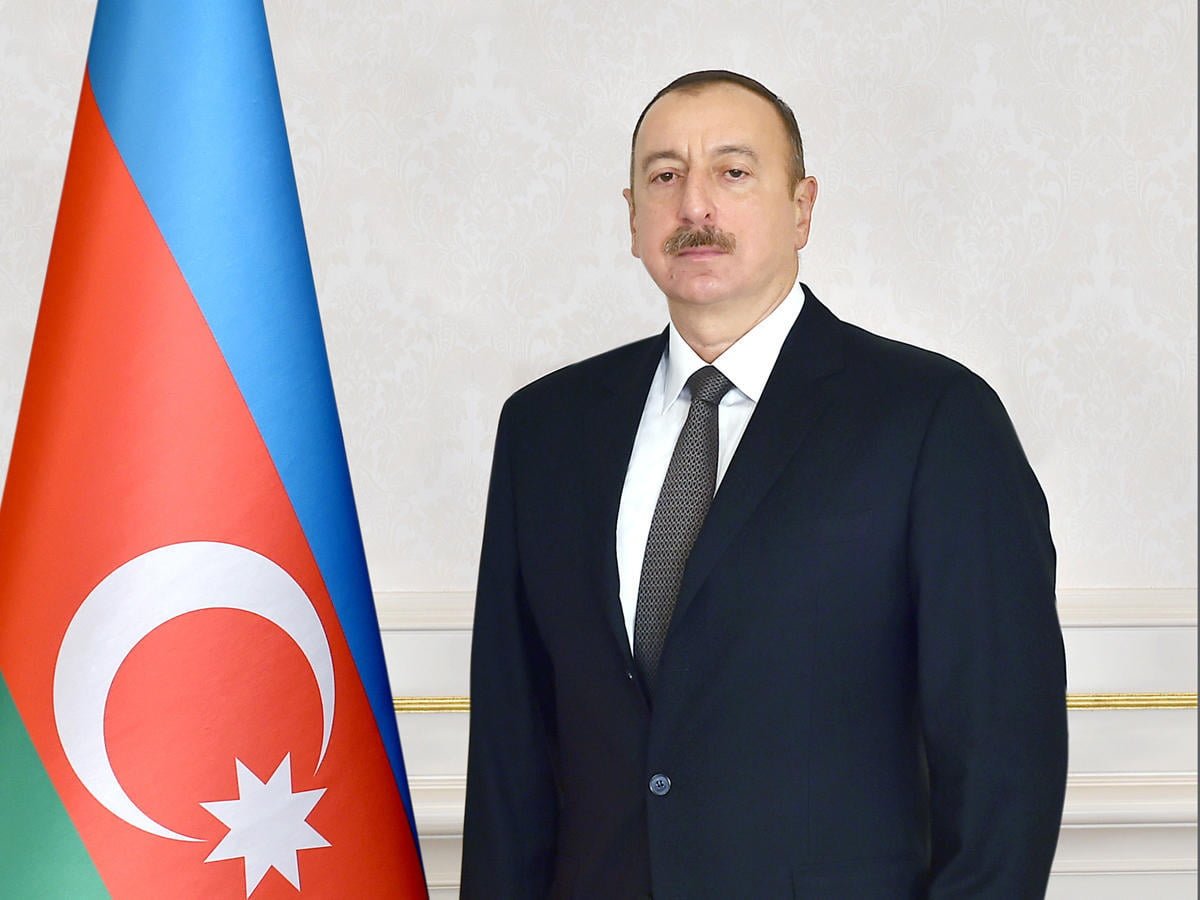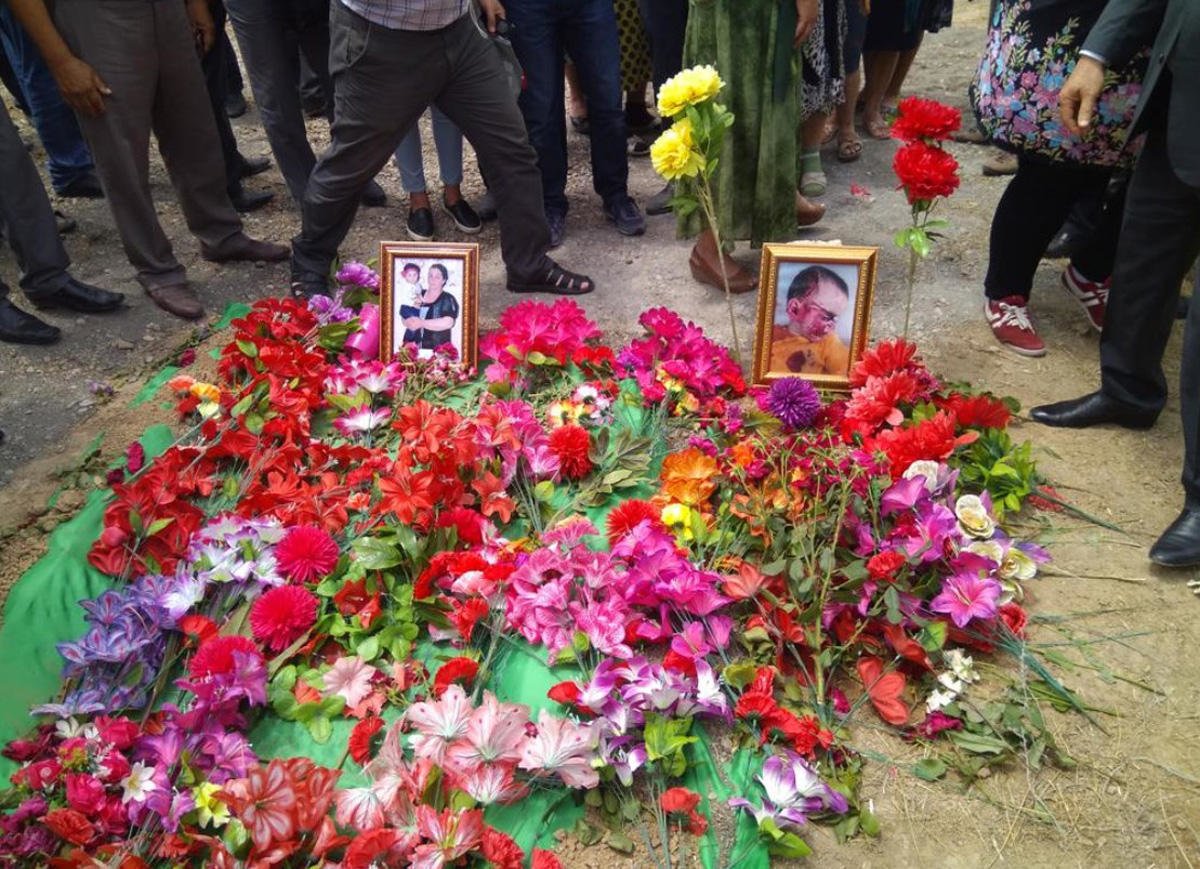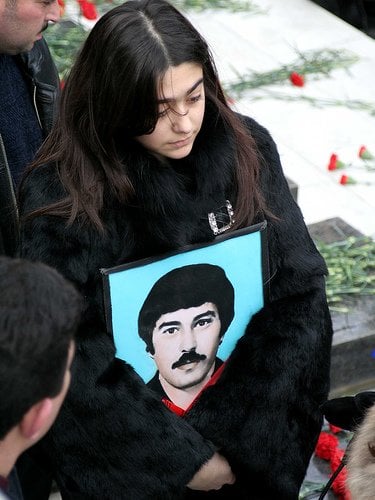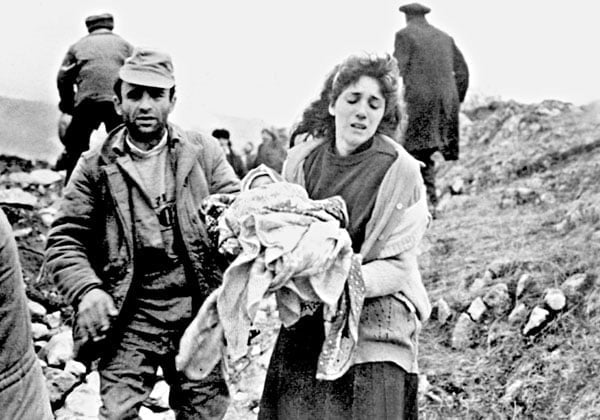Mehmood Ul Hassan Khan
The Republic of Azerbaijan is a brave country which people have been fighting against illegal occupation and brutality of Armenia since 1994. Most recent continued killing of innocent children once again shows Armenia crimes against humanity and serious violation of international law. Despite the announcement of the ceasefire in 1994 the Armenian army continues killing children in Azerbaijan. In the past years so many children have been remained prime target of Armenian aggression and terrorism.
Turkish President Recep Tayyip Erdogan called President of Azerbaijan Ilham Aliyev and offered his deep condolences to Ilham Aliyev in connection with the murder of two Azerbaijani civilians in the shelling of the territories, adjacent to the line of contact between the Azerbaijani and Armenian troops, by the Armenian armed forces, as well to the families of the victims.
H.E. Ilham Aliyev noted that this is a military crime, once again committed by the Armenian armed forces against Azerbaijani civilians. This bloody crime committed against the civilian population is another manifestation of the Armenian atrocities. All responsibility for this military crime rests with the political leadership of Armenia.
The Turkish Foreign Ministry has strongly condemned the provocation staged by Armenia on July 4 on the contact line between the Azerbaijani and Armenian troops in Fizuli region, which resulted in killing of two Azerbaijani citizens, including a 2-year-old girl.
“This despicable atrocity clearly demonstrated that the provocations which Armenia follows at the border and front regions with heavy weaponry, while occupying one-fifth of Azerbaijan’s territory, target Azerbaijani civilian population, particularly women and children in violation of international law and humanitarian values, Turkish foreign ministry added.
“International community should acknowledge the fact that this deliberate and systematic policy pursued by Armenia towards fuelling violence is the main obstacle to the peaceful resolution of the Nagorno-Karabakh conflict and put pressure on Armenia to withdraw its troops from the occupied territories of Azerbaijan,” said the statement.
Pakistan being a strategic ally of Azerbaijan also shows spirits of solidarity by condemning the targeting of civilians in Azerbaijan by Armenia armed forces in which among others, a 2 year old girl has lost her life. Iran, Organization of Islamic Countries (OIC), US politicians strongly condemned Armenia.
Religious confessions and communities in Azerbaijan sharply condemned the killing of civilians by Armenian militaries
“The everyday shelling of civilians despite the ceasefire, murders and making population to live under the threat of death once again proves that it is time to sharply change attitude towards the Armenian aggressors and take resolute steps against them on the international arena,” It urged international organizations, including the UN, the OSCE Minsk group and world leaders to punish the Armenian aggressors.
The Nagorno-Karabakh conflict began in 1988 when Armenia made territorial claims against Azerbaijan. As a result of the ensuing war, in 1992 Armenian armed forces occupied 20 percent of Azerbaijan, including the Nagorno-Karabakh region and seven surrounding regions. More than 20,000 Azerbaijanis were killed and over 1 million were displaced as a result of the large-scale hostilities. The 1994 ceasefire agreement was followed by peace negotiations.
Armenia still controls fifth part of Azerbaijan’s territory and rejects implementing four UN Security Council resolutions on withdrawal of its armed forces from Nagorno-Karabakh and surrounding districts.
The Minsk Group, the activities of which have become known as the Minsk Process, spearheads the OSCE’s efforts to find a peaceful solution to the Nagorno-Karabakh conflict. It is co-chaired by France, the Russian Federation, and the United States. Although the OSCE Minsk Group deals with the issue for over two decades, its activities have brought no breakthrough results so far.
Armenia’s aspiration to occupy Azerbaijani lands and the use of the most insidious and illogical methods to achieve this is a clear example of the Armenian hypocrisy. Common people, NGOs, Think-Tanks and religious leaders strongly condemned Armenian aggression against Azerbaijanis people living in occupied areas.
“In the occupied territories, 600 schools, where 140,000 students studied, 65 vocational schools for 53,000 students and 2 higher education institutions were destroyed. 700 health centers which include a hospital for 800 people, polyclinics, maternity homes, drugstores and emergency hospitals were destroyed,” the stamen reads, adding that total economic damage to healthcare is about $ 1.2 billion. Some 903 state registered, 1500 non registered historical and cultural monuments, 26 museums, 8 painting exhibitions, 4.6 million books and 927 libraries, 85 art schools, 20 cultural palaces, 4 state theaters, which belonged to Azerbaijan were destroyed.
The most inhuman act was committed in Khojaly. “Thus, 613 people, including 63 children, 106 women, 70 old people, were killed during the events of February 25-26 1992. Some 130 children lost one of their parents, 487 were injured, including 76 children. 1,275 people were captured and 150 Khojali residents went missed.” It is an act of terrorism and genocide. The Armenian state has once again seriously violated the fundamental norms and principles of international law.
“The Armenian side violates the Hague conventions on the protection of the civilian population, the Geneva Conventions on the Protection of Victims of War, and the UN Security Council resolutions during the armed conflicts (wars), continuing its repulsive and aggressive policy.” Moreover, Armenia has not yet implemented four UN Security Council resolutions on withdrawal of its armed forces from the Nagorno-Karabakh and surrounding districts.
Today July 7, 2017 is also a historic day on which Armenian militaries invaded Agdere during the beginning of the Nagorno-Karabakh war. Located in the north of Azerbaijan’s Nagorno-Karabakh region, Agdere was always a high priority for Armenian occupants. Although Azerbaijani troops liberated the region from the Armenian invaders on July 4, 1992, Armenian forces re-occupied it again on July 7, 1993 due to hard political situation in Azerbaijan. Today, Azerbaijan controls several villages of Agdere, but most part of it, including Agdere city, still suffer from the Armenian occupation.
Agdere was an important agricultural region of Azerbaijan. The economy was dominated by the viticulture, grain-growing, tobacco cultivation and cattle breeding. Mostly mountainous Agdere, which also has lowland areas in east, is covered with forests by 44 percent. The main rivers of Agdere are Tartar and Khachinchay.
The region is rich in mineral resources, such as polymetallic ores, limestone and gypsum. The Mehmana polymetallic deposit in Agdere contains a lot of limestone and plaster reserves. Moreover, coal deposits were found in the region in the late 1980s.
Like other regions of Nagorno-Karabakh, Agdere also was home to many historical monuments. Among the well-known architectural monuments of the region are the Albanian temple Ganjasar in the Vangli village, Urek temple (12th century), Hatam Malik tower near the Talysh village, Holy Iako temple in the Kolatag village (year 635), the temple at upper flow of the Tartar river (13th century), and many other ancient temples, bridges and other monuments.
Before the occupation, two districts, 57 villages, 67 clubs, 51 libraries, 30 secondary schools, seven hospitals and a professional lyceum were located in the Agdere region, having an area of 1,705 square kilometers. Unfortunately, all of them were destroyed by the Armenian occupants after invasion of Agdere.
Demographic data say that over 14,000 Azerbaijanis were living in the region before its occupation by Armenia. Regrettably, now all of them are internally displaced persons, who had to leave their native homes in Agdere and move to other regions of Azerbaijan due to the Armenian aggression.
Due to Armenia-triggered Nagorno-Karabakh conflict, 20 percent of Azerbaijani internationally recognized territory still remains under occupation. More than 20,000 Azerbaijanis were killed during the war and over 1 million were displaced as a result of the large-scale hostilities.
Although the UN Security Council adopted four resolutions on withdrawal of Armenian armed forces from Nagorno-Karabakh and surrounding regions of Azerbaijan, aggressor Armenia illegally remains in those lands. Today, when Azerbaijan does its utmost to resolve the Nagorno-Karabakh conflict, Armenia does the opposite the aggressor makes everything to preserve the unacceptable status quo in Nagorno-Karabakh.
Concluding Remarks
The Republic of Azerbaijan is a brave country whereas Armenia is a coward state which always believes in terrorism, genocide and widespread killings of innocent civilians of Azerbaijan. Azerbaijan is responsible country and Armenia is irresponsible state which always believes in conspiracy and confrontation. Azerbaijan is the ultimate reflection of martyrdom whereas Armenia stands for human miseries and national crises. Azerbaijan is center of inter-cultural dialogue whereas, Armenia is place of internal rivalries.
The most recent provocations of Armenia are a horrendous crime against humanity. It is serious violation of international law. It is an act of terrorism and genocide of Armenia state.It is an act of terrorism and genocide of Armenia state. It demands further condemnation, isolation and marginalization. It demands immediate resolution of Nagorno-Karabakh conflict.



